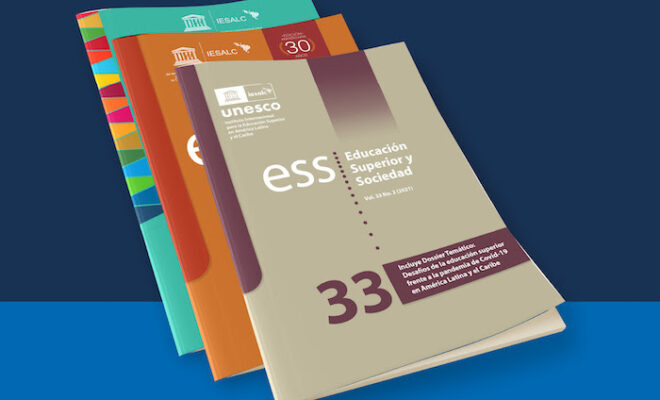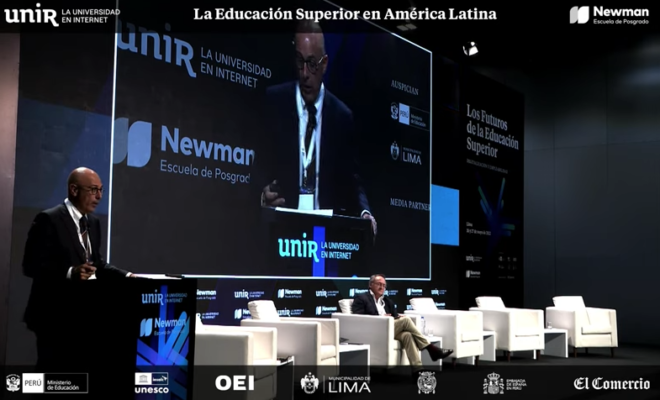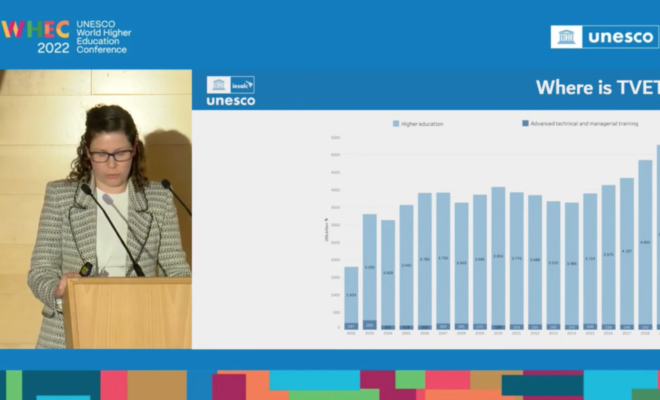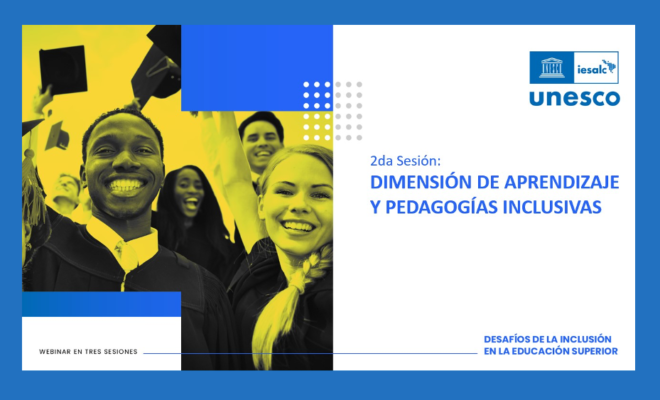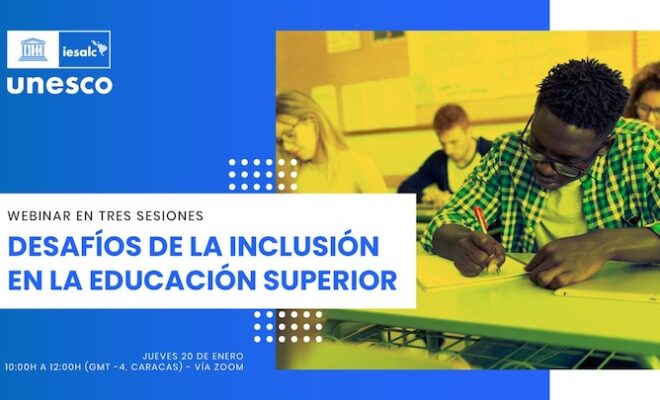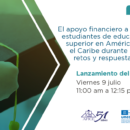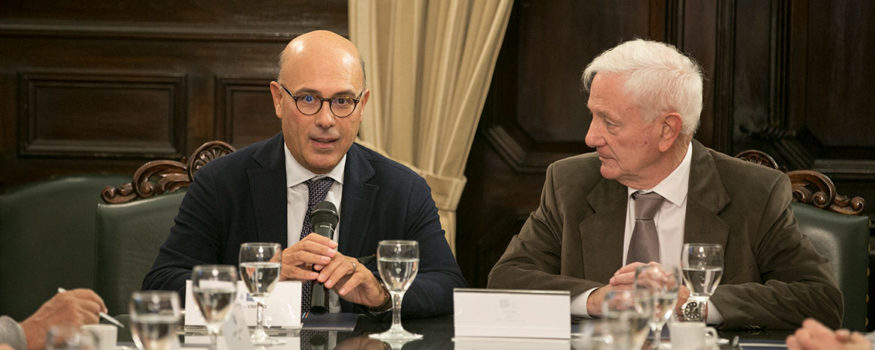Six lessons from the International Day for the Elimination of Racial Discrimination
By Salma Zakaria Ahmed
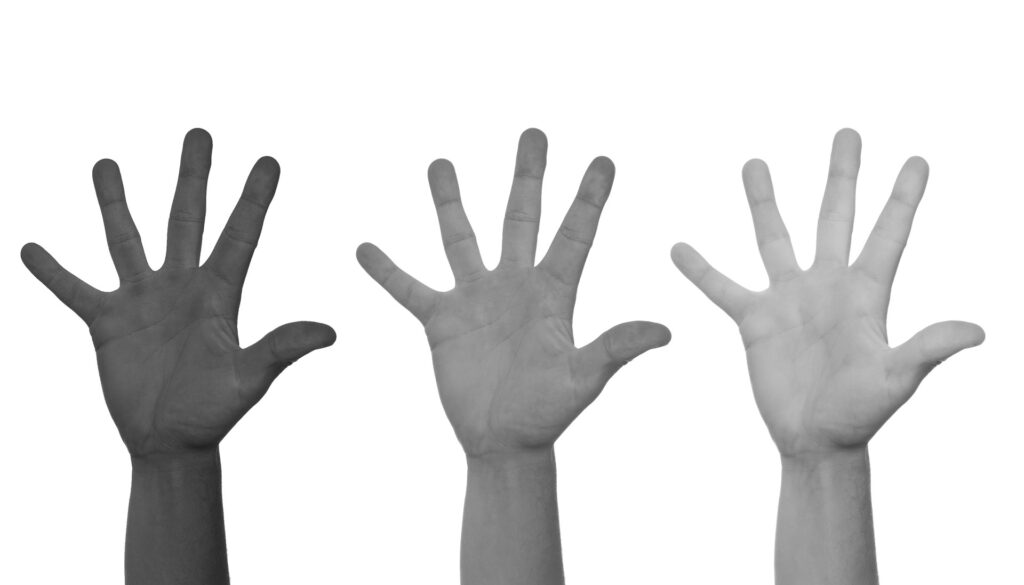
Racial discrimination can be experienced in many ways and plays out differently across diverse settings. It is critical that we dismantle the systematic ways that racism is being upheld in our societies.
One way racism manifests itself is in the higher education sector. What can higher education institutions do to eradicate racism internally and in their societies? This is one of the questions that was discussed on the International Day for the Elimination of Racial Discrimination on March 21st, 2022.
To mark this event, UNESCO IESALC together with Universidad Nacional de Tres de Febrero (UNTREF), Argentina; the International Center for Higher Education Management (ICHEM), University of Bath, UK; University of the West Indies (UWI) and Universidad de las Regiones Autónomas de la Costa Caribe Nicaragüense (URACCAN), Nicaragua, held a webinar with leading scholars; Daniel Mato, Rajani Naidoo, Alta Hooker and Verene A. Shepherd.
Here are six takeaways from them on this webinar:
1. Racism in higher education has a long history that continues to make a strong impact. Racist institutions and governance structures such as apartheid were created to ensure that white people remained privileged. In South Africa, the best resourced universities were reserved for white students, and yet even though apartheid no longer exists, many students of African descent remain outside the campus gates. According to Professor Naidoo, those who do manage to enter are pushed out because universities are not set up to support them. Professor Shepherd acknowledged that the content of higher education in the Caribbean follows a Eurocentric curriculum inherited from the colonial period, a period of racism where people were deemed to be property and were thus enslaved. Those exposed to formal education in the post-slavery period were confronted with the views of racist writers such as Edward Long and Thomas Carlyle.
2. Today, exclusion is still a hallmark of racism in higher education. We see the effect of racist systems by witnessing the hierarchies of race and class in higher education. As Professor Mato noted, for Indigenous and Afro-descendant people entering higher education in Latin America, racial discrimination shows up through exclusion from the curriculum, worldviews, languages, history and more. As Mato also stated, we have to make sure to use the correct language. Racism is a regime of power and ideology, whilst racial discrimination is a manifestation of racism. In Latin American societies, racism is so naturalized that the majority of the population tends to limit the use of the concept of “racism” to the explicit facts of “racial discrimination”.
3. Interculturality is a value that should be promoted more in higher education. Higher education facilities are usually a hub where many cultures meet. Professor Hooker shared the importance of utilizing this role as a hub by not only acknowledging one another but learning from each other and sharing ideas. She stated that we often close ourselves off, but it is in coming together and sharing alliances that we can move forward. Furthermore, it is essential to promote the creation of universities and other types of institutions of intercultural higher education. Many examples of universities from countries in Latin America being built and shaped in the path of interculturality, such as URACCAN where Hooker is rector, were shared. Shepherd also stressed the value of training intercultural, bilingual teachers and that this should be a priority duty in higher education. She encouraged us to embrace the philosophies of Marcus Mosiah Garvey, who said: “A people without the knowledge of their past history, origin and culture is like a tree without roots.”
4. Access to students must be democratized. Racial discrimination is not only limited to the tangible, direct ways of experiencing it, but also shows up in subtler ways. Examples were given by Hooker such as invisibility, denial and exclusion. In the case of Indigenous and Afro-descendant students, factors of estrangement and denial of their existence have a negative effect on their educational trajectories. As an example, Naidoo discussed Khanya College in South Africa as an alternative model of higher education. They worked to fit to students’ needs rather than the other way around. The students were able to see themselves, understand their own histories, and work with their community. After a year, the students continued their studies with higher education and with the knowledge and experience gained, became change agents for their society.
5. At multiple levels, progress has been made in the pursuit of eliminating racial discrimination. One example provided by Mato was the Regional Conference on Higher Education (CRES) held in Cartagena de Indias in 2008. The Declaration that followed from CRES recommended that inclusion must be on the agenda, alongside ensuring social and cultural relevance to Indigenous and Afro-descendant peoples. A second recommendation was to promote and facilitate the learning of languages of Indigenous and Afro-descendant peoples and their effective use in practices such as teaching, research and extension. These recommendations were extended in CRES 2018 that was held in Córdoba, Argentina. At institutional level, Shepherd provided an example of The UWI. They have cemented three primary pillars: Access, Alignment and Agility, enabling a focus on more affordable access to higher education to reduce social inequality, alignment with society, and enhanced agility in the pursuit of opportunities.
6. The road towards fully eliminating racial discrimination remains a long one. One of the many proposals for transformation is that of Mato who recommended that the study plans of all higher education programs should be reviewed to include multiple visions of the world, languages, knowledge, learning modalities and modes of production knowledge of Indigenous peoples and Afro-descendants in the context of Latin America. He also mentioned the necessity of establishing Affirmative Action Programs that ensure the rights of participation of members of these communities as students, teachers and authorities in Higher Education institutions.
Taken together, the lessons from this webinar taught us how deeply rooted the issues of systemic racial discrimination are in higher education systems. The only way forward is to start by acknowledging the issues at hand. Furthermore, as Hooker stated, in systems of higher education, there has to be political will among the higher education authorities to recognize and respond to the needs of everyone involved.
Universities can reproduce racism, but they can also help challenge it. In the words of Naidoo, “the small gains we have made in the role of universities make to challenge racism are being attacked and we have to find ways to protect the small gains we have won and to move forward. And we have to find ways to connect to excluded communities of all colour”.
UNESCO IESALC shares it utmost gratitude for the knowledge shared by our panelists and important scholars and in closing asks you: How does your university support the work of anti-racism? What can you do in your role to support the elimination of racial discrimination in higher education?
Related news:
RELATED ITEMS
